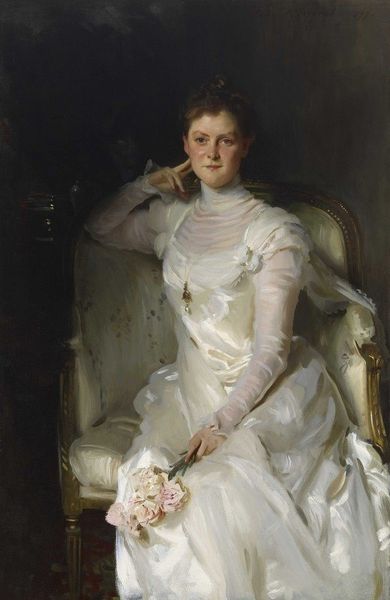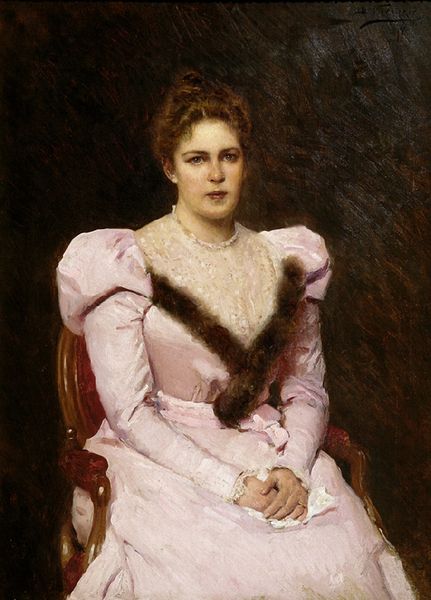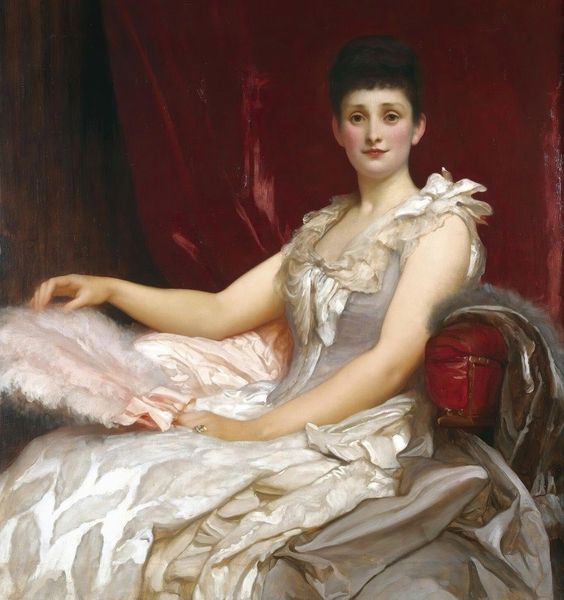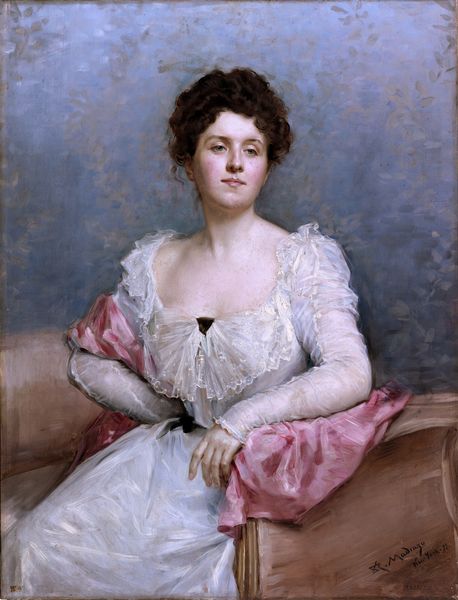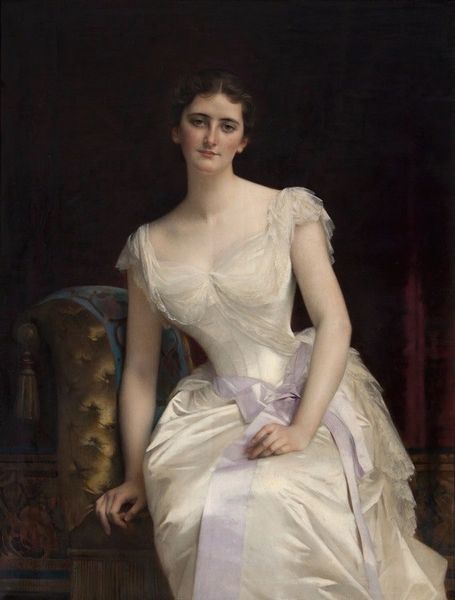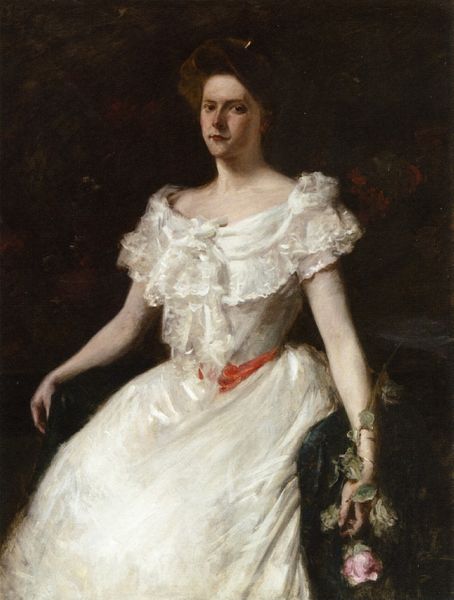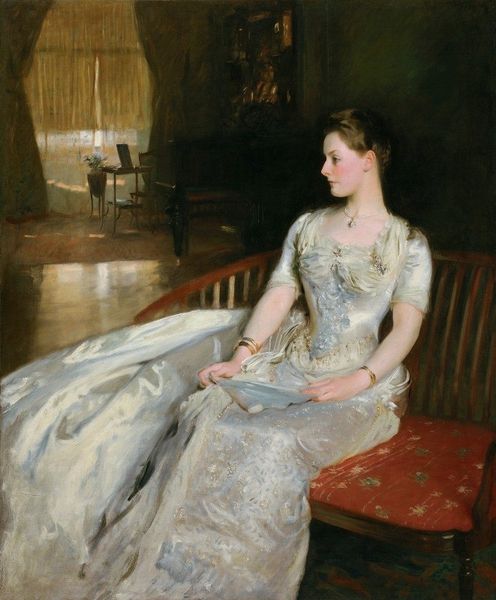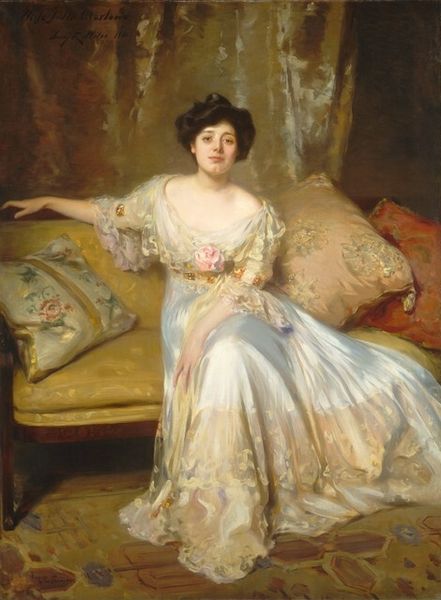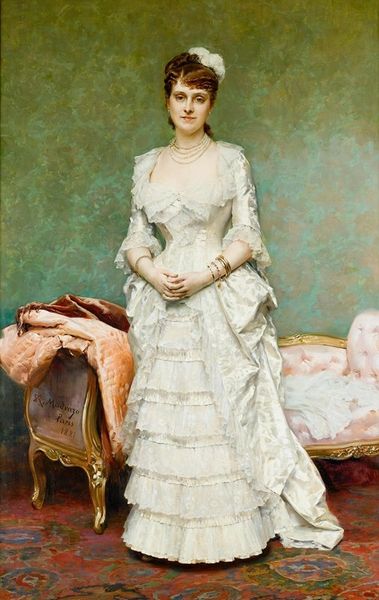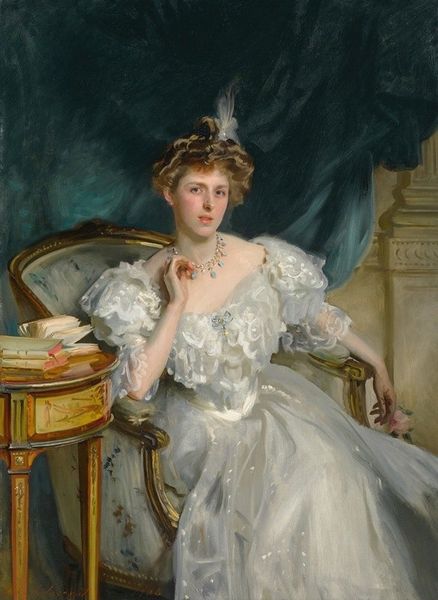
painting, oil-paint
#
portrait
#
painting
#
impressionism
#
oil-paint
#
genre-painting
#
academic-art
#
lady
#
dress
#
portrait art
#
fine art portrait
#
realism
Copyright: Public domain
Editor: We are looking at Frank Benson's "Portrait in White," painted in 1889 with oil on canvas. I'm really struck by the dress, all shimmering whites, but then juxtaposed with the plainness of the sitter's face. What’s your perspective on the way Benson renders materials here? Curator: Well, first, notice that it *is* called "Portrait in White," which to me signals an engagement with materiality itself. Benson isn't just depicting a woman; he's deeply involved in representing the social performance of class through the textures of that garment. What kind of labor went into producing such a dress in 1889? Editor: That's fascinating! It probably took a team of seamstresses a considerable amount of time to produce such intricate folds and layers. Curator: Exactly. Think about the consumption implied by such a garment, too. This portrait isn't simply about capturing a likeness; it's an assertion of social standing via the literal accumulation of fabric and the specialized skill needed to transform that fabric into fashionable attire. How do you think the choice of oil paint as the medium contributes to this statement? Editor: Hmm, oil paint does lend itself well to capturing light and texture…maybe it’s the way Benson builds up layers, similar to how the dress is constructed, that gives it that richness? Curator: Precisely. The materiality of paint mirrors and reinforces the materiality of the dress, both reflecting a complex network of production, skill, and consumption in the late 19th century. And who likely wore this expensive, difficult-to-clean dress, and where would she wear it? Editor: I never would have considered the actual labor it took just to *create* that dress. Thank you for that context. Curator: It makes you rethink the power dynamics at play, doesn't it? The painting itself becomes a document of material culture, far beyond just an image.
Comments
No comments
Be the first to comment and join the conversation on the ultimate creative platform.


